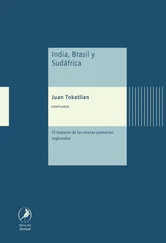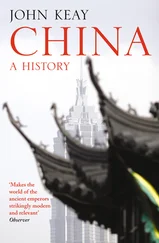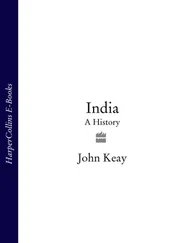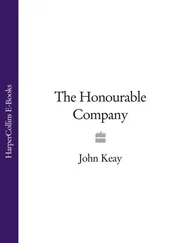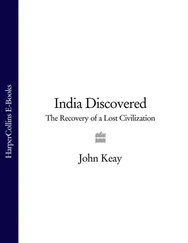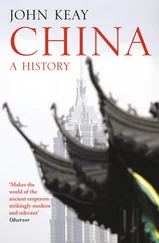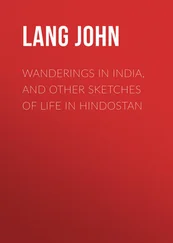Whether this Thomas was really Thomas the apostle, and whether he really reached the Panjab, is suitably open to doubt; likewise the ‘converts’ he is supposed to have made there. But at least the tradition implies that Gondophares must have ruled after the death of Christ. This may not seem a great point. It deserves, though, to be greeted as something of a milestone in what is otherwise a trackless wilderness of dynastic uncertainty.
Both Shakas and Parthians had originated beyond the Hindu Kush. There, along the desert routes from China and across the steppes of Turkestan, a major upheaval had been taking place. Chinese sources tell of the construction of the Great Wall in the third century BC and the repulse of various marauding tribes. Forced to head west and eventually south, these tribes displaced others in an ethnic knock-on effect which lasted many decades and spread right across central Asia. The Parthians from Iran and the Bactrian Greeks from Bactria had both been dislodged by the Shakas coming down from somewhere near the Aral Sea. But the Shakas had in turn been dislodged by the Yueh-chi who had themselves been driven west to Sinkiang by the Hiung-nu. The last, otherwise the Huns, would happily not reach India for a long time. But the Yueh-chi continued to press on the Shakas and, having forced them out of Bactria, it was sections or clans of these Yueh-chi who next began to move down into India in the second half of the first century AD.
Once again the ready assumption that the Yueh-chi, or Kushana as they are known in Indian history, actually invaded India should be treated with caution. Little is known either of the circumstances which accounted for the movements of these peoples or of the reception they received in India. They may have come as allies or mercenaries, invited by disaffected Indians like Alexander’s Ambhi; or they may have come as refugees fleeing invasion just like the Tibetans, Afghans and Bangladeshis of the twentieth century. India’s ancient history was first reconstructed largely by British scholars in the nineteenth century who, schooled on the invasions of Aryans, Macedonians and Muslims, readily detected a pattern of incursions. Their own presence conformed to it; indeed this pattern of constant invasion conveniently excused their presence.
The coins and inscriptions of the first few centuries BC/AD certainly testify to alien rulers, but of battles we know nothing, let alone who won them. Marital alliances, economic crises, coups and assassinations have probably triggered more dynastic changes than have successful invasions. Given the crisis of political legitimacy, given too the obscure origins of most indigenous dynasties of the period, plus the absence of anything like a national consciousness, there may have been no fundamental objection to accepting as kings men with strange names, remote origins and unusual headgear.
The Pahlavans/Parthians quickly disappeared from the Indian scene. They would be resurrected only once, and much later, as the doubtful antecedents of the Pallavas of Kanchipuram, a distinguished dynasty but one separated from the Parthians by three centuries and the breadth of the entire subcontinent. The Shakas/Scythians, segmenting into a variety of junior kingdoms, or satrapies, and readily assimilating to Indian society, made a more lasting impression. At one time they penetrated to Mathura and Ujjain but would latterly be penned into Saurashtra (in Gujarat); thence, as the ‘Western Satraps’, they would resurface briefly in the first and second centuries AD. Only the Yueh-chi or Kushanas, and in particular their great king Kanishka, would establish anything like an Indian empire.
Coins, plus an inscription found at Taxila, bear early testimony to the pretensions of the Kushana. ‘Maharajah’, ‘King of Kings’, ‘Son of God’, ‘Saviour’, ‘Great One’, ‘Lord of all Lands’, ‘Caesar’ and other such titles are reeled off as if the incumbent wished to lay claim to every source of sovereignty going. ‘Son of God’ is thought to be a legacy of the Yueh-chi’s familiarity with China and its celestial rulers; ‘King of Kings’ was borrowed from the Shakas, who had imitated the Achaemenids of Iran; ‘Saviour’ came from the Greeks; ‘Caesar’ from the Romans. The coins are of the highest quality and show a switch to Roman weight standards; possibly they were actually recast Roman aurei . But to accommodate such fanfares of majesty in the limited space available, the name of the king in question was often left out. The succession of the Kushana kings is therefore far from certain. It is thought that there was a Kujula Kadphises and then a Wima Kadphises, evidently another devotee of Lord Shiva, who between them added to their Afghan territories those of Gandhara, the Panjab, and the Ganga-Jamuna Doab at least as far south as Mathura.
After these Kadphiseses came, probably, Kanishka. Inscriptions referring to him (or to the era which supposedly began with his accession) are found over a vast area extending from the Oxus frontier of Afghanistan to Varanasi and Sanchi. Tradition further testifies to his conquest of Magadha and to vast responsibilities in and beyond the western Himalayas, including Kashmir and Khotan in Sinkiang. Buddhist sources, to which we are indebted for much of this information, hail him as another Menander or Ashoka; he showered the sangha (the monastic community) with patronage, presided over the fourth Buddhist council and encouraged a new wave of missionary activity. At Purushpura, or Peshawar, his capital still boasts the foundations of a truly colossal stupa. Nearly a hundred metres in diameter and reliably reported to have been two hundred metres high, it must have ranked as one of the then wonders of the world.
Mathura on the Jamuna seems to have served as a subsidiary capital, and nearby have been found suitably massive statues of Wima Kadphises and of Kanishka himself. Unfortunately both have been decapitated. While for the Greeks, thanks to their coins, we have notable heads but few torsos, for the Kushanas we have notable torsos but few heads. Kanishka stands in challenging pose, his outsize feet encased in quilted felt boots and splayed outwards. The full-frontal presentation reveals a belted tunic beneath a stiff ankle-length coat that looks as if it could have been of leather. One hand rests on a grounded sword of skull-splitting potential, the other clutches an elaborate contraption sometimes described as a mace but which could equally be some kind of crossbow. Hopelessly overdressed for the Indian plains and most un-Indian in its angular and uncompromising posture, this statue evokes the harsh landscapes whence the Kushana came and where, while campaigning in Sinkiang, Kanishka is said to have died. Although surely not ‘one of the finest works of art produced on Indian soil’, his statue is indeed ‘unique as the only Indian work of art to show a foreign stylistic influence that has not come from Iran or the Hellenistic or Roman world’. 6
Kanishka’s successors, many with names also ending in ‘-ishka’, continued Kushana rule for another century or more. As with other august dynasties, their territories are assumed to have shrunk as their memorials became fewer and nearer between; in the course of time the Kushanas dwindled to being just one of many petty kingdoms in the north-west. Unfortunately it is impossible to be precise about their chronology since all inscriptions are dated from the accession of Kanishka, itself a subject of yawning complexity which numerous international gatherings on several continents have failed to resolve. Today’s Republic of India, as well as having two names for the country (India and Bharat), has two systems of dating, one the familiar Gregorian calendar of BC/AD and the other based on the Shaka era which is reckoned to have begun in 78 AD. Although called ‘Shaka’ (rather than ‘Kushana’), this era is supposed by many to correspond with the Kanishka era. Others have tried to match Kanishka with another Indian era, the Vikrama, which began in 58 BC. This seems much too early. On the other hand the latest scholarship, based on numismatic correlations between Kushana and Roman coins, pushes Kanishka’s accession way forward to about 128 AD.
Читать дальше


